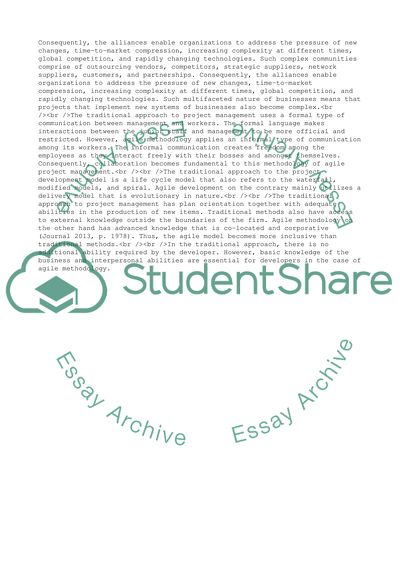Cite this document
(Project Management: Differences between Agile Methodology and Coursework Example | Topics and Well Written Essays - 2000 words - 24, n.d.)
Project Management: Differences between Agile Methodology and Coursework Example | Topics and Well Written Essays - 2000 words - 24. https://studentshare.org/management/1855245-project-management
Project Management: Differences between Agile Methodology and Coursework Example | Topics and Well Written Essays - 2000 words - 24. https://studentshare.org/management/1855245-project-management
(Project Management: Differences Between Agile Methodology and Coursework Example | Topics and Well Written Essays - 2000 Words - 24)
Project Management: Differences Between Agile Methodology and Coursework Example | Topics and Well Written Essays - 2000 Words - 24. https://studentshare.org/management/1855245-project-management.
Project Management: Differences Between Agile Methodology and Coursework Example | Topics and Well Written Essays - 2000 Words - 24. https://studentshare.org/management/1855245-project-management.
“Project Management: Differences Between Agile Methodology and Coursework Example | Topics and Well Written Essays - 2000 Words - 24”. https://studentshare.org/management/1855245-project-management.


